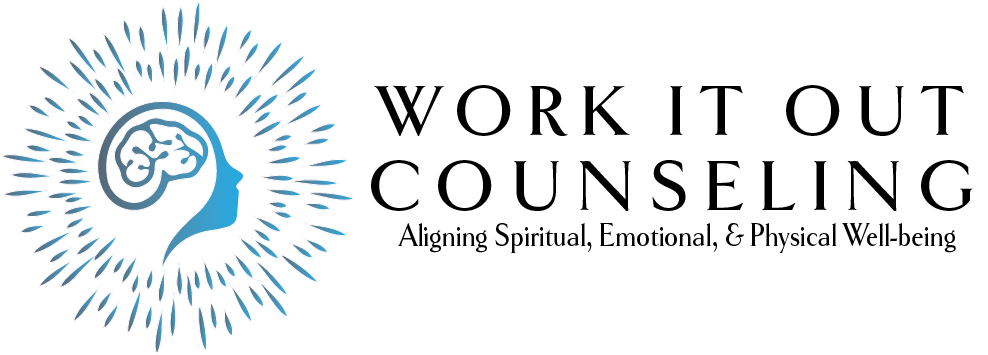How to Address Mental Health in the Workplace

By: Amanda Nichols
Categories:
How to Address Mental Health in the Workplace
As the mental health crisis continues to be a growing concern, I’d like to talk about ways we as a community can meet people in need of mental health guidance, where they are. The average worker spends about a third of their day in the workplace. Employers need to be aware of the prevalence of mental health problems, how they might appear in the workplace and how addressing them quickly and with compassion can improve the bottom line for everyone.

The Impact of Stress on Mental Health
Stress is a major contributor to mental health problems, and it’s becoming more and more prevalent in today’s post-covid, fast-paced world. According to the American Psychological Association in 2020, 74% of Americans reported experiencing stress daily. I don’t have current data on this, but my guess is that number is dramatically higher two years later. This stress can take a toll on both physical and mental health, leading to problems like anxiety, depression, insomnia, and even heart disease.
The American Psychiatric Association has also found that employees with unresolved depression have a 35% decrease in productivity, resulting in a $210.5 billion annual loss to the U.S. economy due to absenteeism, decreased production, and medical costs.
One of the largest obstacles we face as a culture is the persistence of shame and stigma regarding mental health, which leads to reluctance to discuss and, in some circumstances, fear of seeking treatment for mental health disorders.
Let’s look at some ways that employers and employees can start to break down that stigma.
Cultivate a Culture of Wellness
Employers can start by cultivating a culture of wellness. Creating a culture of wellness means fostering a workplace that encourages and promotes the whole well-being of employees. It means implementing ways for employees to be healthier at the workplace and helping them create healthy habits in both their personal and professional lives. Providing gym memberships, fitness initiatives, health insurance, and healthy eating options can help. Employers can promote wellness via flex time for exercise and smoke-free workplaces. By creating a culture of wellness employers can help their employees feel more fulfilled by their home and work environments – a bonus, that impacts your bottom line!
According to a recent survey, almost half of employees believed they required assistance in learning how to deal with the difficulties associated with their job. As a result, several businesses have begun consulting professional coaches and counselors and even bringing these specialists in for a team mental health day to help them deal with stress. Fostering psychological safety improves employee well-being. And we know that mental health highly contributes to overall well-being. When employees are mentally healthy, it’s easier for them to perform at an optimal level and avoid stressors that keep them from doing their best. It also allows all team members to flourish regardless of gender, color, race, background, or political preferences. The result is a rich give-and-take experience where everyone feels connected and part of a united front.
Employees can and should be included in the planning and execution of this culture of wellness. It allows them to have a voice in what kind of programs and tools would best support them.

Mental Health Lunch and Learn
Lunch and learns are an excellent approach to capture the attention of your staff. Sure, sending out email blasts and posting posters in the break room are effective approaches to promoting healthy habits at work. However, they are not the most effective strategy to assist your employees in taking care of their health. Your staff will feel more educated and inspired to make better health decisions if you bring in a professional to provide useful information.
When it comes to employee health and wellness, there are numerous topics to choose from for your lunch and learn session. Does your team require assistance in making healthier food choices? Are your employees sedentary and in need of some advice on how to become more active? Do they require counseling or coaching? Choose a topic that will be of benefit to your employees. Here are some examples:
- Mental and Emotional Health
- Stress management techniques and coping skills
- Ending the stigma of mental illness in the workplace
- How to prioritize your mental health
- Dealing with anxiety and depression
- How to practice self-care
- Mindfulness 101
- Health in the Workplace
Offering Chair Massage Therapy in the Workplace
Massage therapy has been shown to be an effective way to reduce stress on both physical and psychological levels. A study by the University of Miami found that massage therapy significantly reduced cortisol levels (a hormone that’s linked to stress) in participants. Massage therapy can also help improve sleep quality, increase energy levels, and reduce anxiety and depression.
When employees feel supported by their employers, they’re more likely to be productive and engaged in their work. Moreover, they’re less likely to experience job burnout or high turnover. And when your team is happy it can have a positive impact on your bottom line.
Investing in employee wellness is a smart business move and offering massage therapy is a great way to start. You could even make this part of a lunch and learn! Read more about therapeutic massage services at Work It Out.
Does your workplace have an Employee Assistance Program?
Employee assistance programs (EAPs) can help employees with personal problems that affect their job performance. EAPs can identify and address a wide range of health, financial, and social issues, including mental and/or substance use disorders. An EAP provides a confidential source that employees can use to find support and resources for certain challenges they face. The service is usually provided as part of a larger benefits package and connects employees to assessments, short-term counseling, referrals, and follow-up services. You should ask employers if they provide this program and I encourage employers that are able, to investigate this for their team if not already in place.
Encourage Breaks

If your workplace can’t support something like a lunch and learn, and can’t implement an EAP, even discussing these topics on breaks, openly, and without judgment can go a long way in helping to reduce the impact of mental health concerns at work.
Encourage staff to take frequent breaks during the day. This could be going for a walk, reading a book, or speaking with a colleague. You could even invest in a BrainTap device to help employees allow their brains to relax and restructure. Contrary to what many people believe when they are anxious, taking breaks makes you more effective, energetic, and ready to face the problems ahead of you.
Conclusion
Positive mental health is important because it allows us all to cope with challenges, even good ones, and setbacks in our lives, both at work and at home. Starting the conversation about positive mental health doesn’t have to be difficult. All it takes to end the stigma and start reducing the instances of mental health issues at work is to start talking about it. If you need someone to talk to or want some assistance with helping your team boost their mental health, give us a call! Work It Out Counseling offers a variety of services, tools, and modalities to help our community align their spiritual, emotional, and physical well-being.


